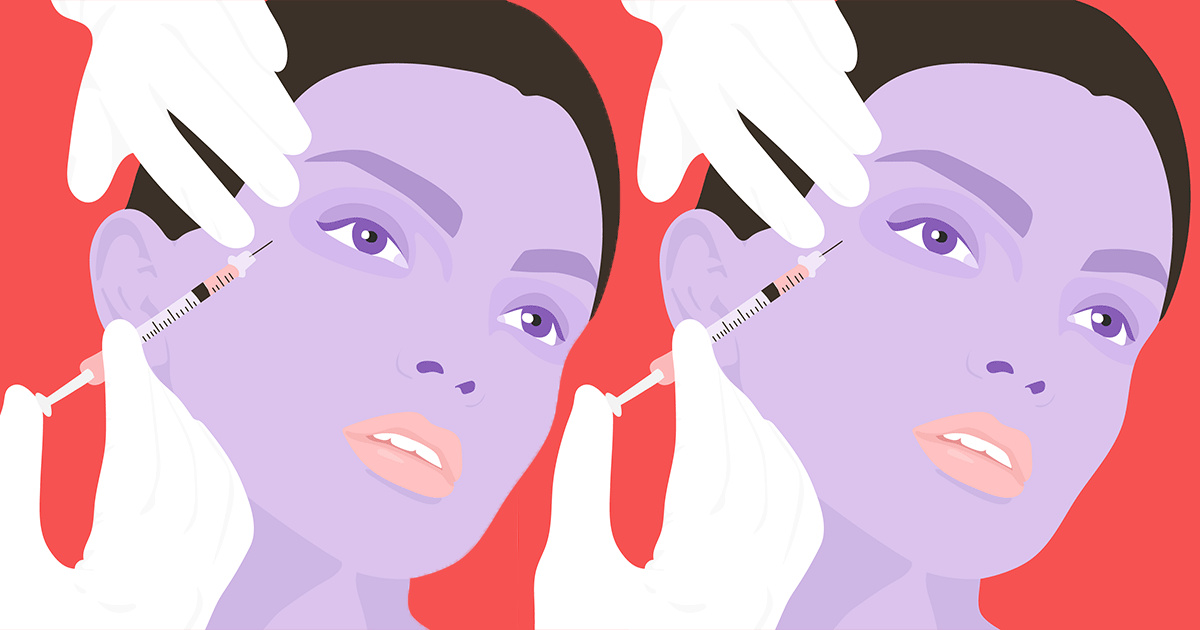
You might have heard about the vampire facial, but have you heard about the vampire facelift? Both procedures use your own blood cells to improve your skin, and both procedures must be performed by a skilled medical professional. However, only one of these procedures will produce results.
Background
Your blood is made up of many different cells and components: red blood cells, white blood cells, plasma, platelets, and much more. We can separate many of these blood components, like cells and platelets, using a centrifuge which quickly spins tubes of blood. Using a specialized centrifuge that spins the tubes, we are able to isolate a layer of cells that is rich in platelets and white-blood-cell-rich fibrin. We call this result platelet-rich fibrin, or PRF.
PRP vs. PRF
Although there are some basic similarities between platelet-rich plasma (PRP) and platelet-rich fibrin (PRF), it is the differences between these two products that makes the platelet-rich fibrin stand out as a superior treatment option. PRF targets the same issues as PRP, but PRF releases the growth factors over time, which means it could have longer-term benefits that stimulates the stem cells that improve collagen and elastin in the skin.
How does PRF help?
Platelets are critical to your body in many ways, like helping your blood clot when you get cut. But their power goes far beyond clotting. Platelets are healing machines that nourish and repair cells. Platelets also stimulate the growth of other cells like collagen. Physicians and surgeons found that they could speed healing of damaged tissues by taking a patient’s blood, isolating the layer of PRF, and injecting those cells into specific areas of the body.
How has PRF been used?
PRF treatments have been used for years by:
- orthopedic surgeons to aid in knee repairs
- wound management specialists to assist in healing chronic diabetic ulcers
- trauma specialists to help regrow skin after severe burn trauma
as well as many other medical applications.
Cosmetic benefits of PRF
It didn’t take long for cosmetic physicians to see that the therapeutic effects of PRF would be beneficial in skin treatments. Using PRF injections in skin tissues will improve skin texture and brighten complexion. Platelets repair damaged skin cells, increase cell turnover, foster collagen production, stimulate blood supply, boost stem cell rejuvenation, stimulate growth factors to aid in skin rejuvenation, and increase skin volume. In addition to all the benefits, using PRF in skin treatments is very low risk, because it uses the patient's own blood.
PRF can also be used to treat hair loss. Details: Treat hair loss with platelet-rich fibrin (PRF).
Vampire facial vs. vampire facelift
Vampire facial = PRF rubbed on skin surface
In a vampire facial you are given a superficial facial treatment of some kind, such as microdermabrasion, needling, or acid peel treatment. Then, the PRF that was extracted from your blood is topically applied to your skin (rubbed on the outside). When PRF is used topically, it can only affect the superficial layers of skin. Even when microneedling treatments are used, the small punctures from the treatment are not deep enough for the PRF to reach the tissues which will benefit most. Topical application of PRF is not an effective use of PRF.
Vampire facelift = PRF injected by physician
The most effective use of PRF in a cosmetic medical setting is a vampire facelift, in which PRF is injected directly into the deeper layers of skin by a trained and skilled physician. These injections get the PRF in direct contact with the tissues that will best use the healing powers of platelets. The optimal use of PRF is in combination with treatments that stimulate deep collagen growth, such as dermal filler injections and sublative laser treatments. A vampire facelift—PRF injections—can be a very effective treatment for acne scars, fine lines, wrinkles, sun damage, neck and décolletage, complexion improvement, under eye darkness or bags, and more. To find out if PRF is right for you, ask your cosmetic medical physician.
Who should avoid PRF treatments?
- patients with low platelets or abnormal platelets
- patients taking anti-clotting medications
Your cosmetic medical physician can help you decide if PRF is a good treatment for you.
What happens during a PRF procedure
The procedure begins with a blood draw: a small needle is inserted in your arm, and a few tubes of blood are taken. The tubes are delivered to a laboratory to isolate the PRF. Some physicians have an onsite laboratory and can isolate the PRF as soon as your blood is drawn. After the PRF returns to your physician, it can be injected, or, if you’re doing a vampire facial, rubbed on your skin. You may experience minor swelling to the area or slight bruising from injection sites. Some physicians use special needles called cannulas to get the best spread of PRF to reduce your discomfort and bruising. You may start to see results from your PRF treatment in 48 hours, but it takes about 2 to 6 weeks for full results to be realized.
Contact us
Are you in the San Francisco Bay Area? Book an appointment with one of our skilled physicians to learn more and develop a treatment plan that is right for your goals, budget, and timeframe. You can book online or call us at 415-409-3456.
Botox is a registered trademark of Allergan, Inc.

